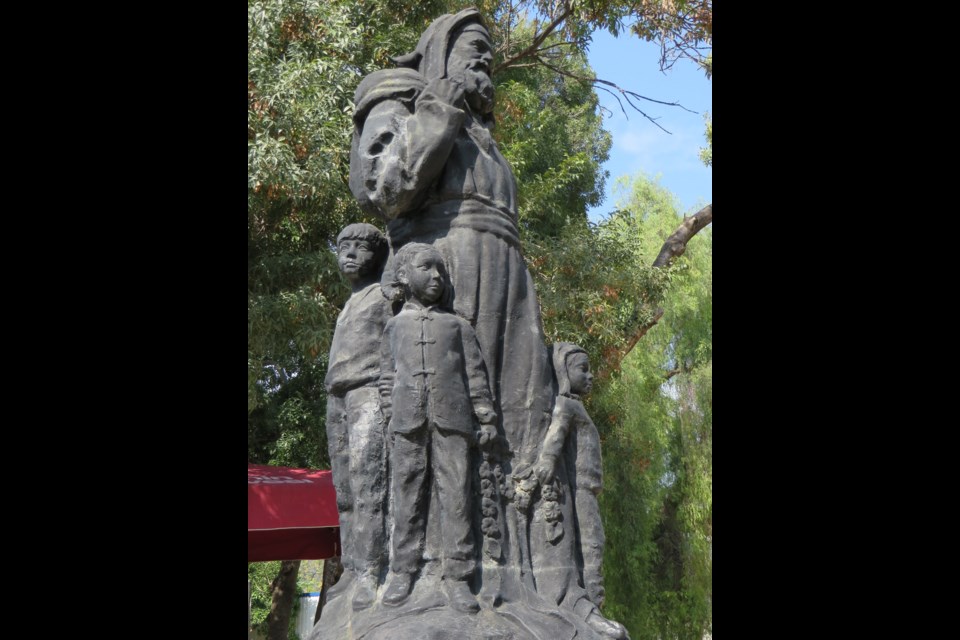OK, maybe it was only October, but we found Christmas in Turkey.
Proof in the pudding? Church frescoes painted with scenes of the nativity and statues of jolly ol’ St. Nick himself. Who knew a trip to Turkey would surprise us with a journey into the ancient origins of this favorite time of the year?
More than 700 kilometres southeast of Istanbul, the Cappadocia region is a maze of geological formations eroded from volcanic rock. One such formation is the 100-metre deep Ihlara Valley. Around the fourth century, priests and monks began carving churches and dwellings into the soft stone of the valley walls. Over the centuries, 105 churches and thousands of rock caverns were created in a 14-kilometre long valley.
Standing on the lip of this valley, our guide Kasim explained the cultural history of the short, three-kilometre section we would walk and my eyes were immediately drawn to the bell-shaped opening of a cavern on the opposite wall. Heading down the metal stairs toward the Melendiz River, we waited patiently for our turn to enter the Ag˘açaltı Kilisesi, the Church Beneath the Tree, also known as the Daniel and the Lion Church.
Like most of the rock-carved churches of the period, it’s cross-shaped in plan. The central section is covered by a dome with high drums (cylindrical walls) and the cross arms are made from tunnel vaults. Painted frescoes decorated in reds, greens and yellows date from the ninth to the 11th centuries. Flowers, rosettes, and checkerboard patterns reflect eastern influences around scenes of religious importance. On the roof of the western arm, fading frescoes show a scene of the nativity and the coming of the three Magi. Faint strains of “We Three Kings” run through my mind, “...bearing gifts we traverse afar...”
From central Turkey and Cappadocia, we flew south to the Mediterranean, landing in Antalya. The main focus of this leg of the trip was exploring archaeological sites along the Lycian Way (a 500-kilometre hiking path). As we turned off the highway in Demre heading towards Myra, I knew we’d have to make a detour to visit one special church. In mid-day heat, passing pomegranate and orange orchards, we weren’t exactly thinking Christmas, but this was the church of the Bishop of Myra – also known as Saint Nicholas, today more commonly called Santa Claus. Images of the jolly fellow in the white-trimmed, red suit overflowed from every gift shop and adorned restaurant signs along the pedestrian mall on the short block leading to the church.
Born in the ancient Lycian port of Patara in the fourth century A.D., the Bishop of Myra gained a reputation for performing miracles and was known as the protector of children, sailors, travellers and the poor. Outside the church, a bronze statue of Santa Claus and three young children feeds the modern connection between the bishop and the now familiar image.
In the late 12th or early 13th century, a devastating flood filled the church and the northern annexes with muddy floodwater and soil. Today’s city is about six metres above the ground level of the church. Heading down the stairs to the church entrance, we found another bronze statue, this one depicting a more serious image of the bishop in his robes.
Inside the church, the opus sectile pavement drew our eyes to the floor beneath our feet. The marble floor is a colourful mosaic made from stone cut into different sizes to form patterns. Then stepping up into the burial chamber on the left, our eyes immediately turned skyward to the 12th century Byzantine paintings depicting more than a dozen scenes from the life of St. Nicholas.
In the middle ages, Myra was an important port visited by merchant ships and by pilgrims on their way to Jerusalem who stopped to worship at the church of St. Nicholas. When he died, the Bishop of Myra was buried at the church. It’s said that merchants of Bari, Italy, stopped by Myra while going to Jerusalem in 1087 and tore down Saint Nicholas’s grave, dug up his bones and carried them home. Although his remains are no longer kept at his namesake church, the basilica continues to be a popular pilgrimage. On Dec. 6 — the day of his death — many people still celebrate St. Nicholas Day.
Along our journey we discovered that while we may not have travelled to Turkey to find Christmas, travellers don’t have to wait until December to experience the historical magic of the season.
megankopp.com



